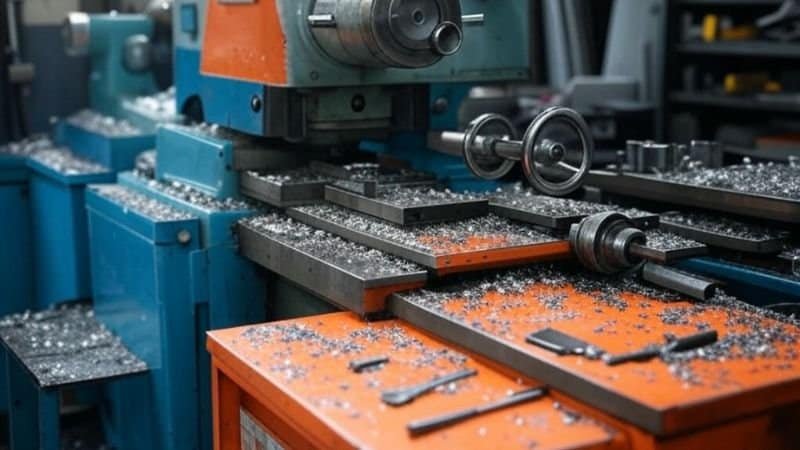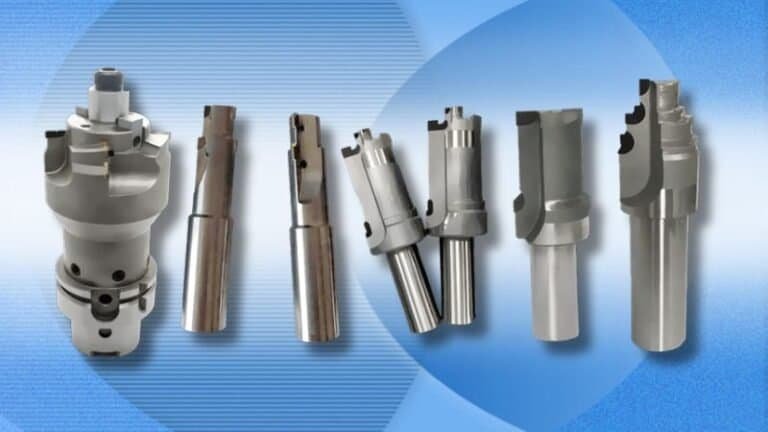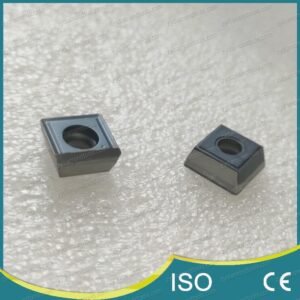-
Whatsapp: +86 13526572721
-
Email: info@zydiamondtools.com
-
Address: AUX Industrial Park, Zhengzhou City, Henan Province, China
-
Whatsapp: +86 13526572721
-
Email: info@zydiamondtools.com
-
Address: AUX Industrial Park, Zhengzhou City, Henan Province, China
What Are CBN Chipbreaker Inserts and How Do They Solve Machining Challenges?
- Knowledge, PCD & CBN Tools Knowledge
- -2025-03-20
- - byKevin Ray
Do you have any needs for PCD tools or diamond grinding wheels? We can customize products to meet your specific requirements. If you have any ideas or requests, feel free to reach out—we’ll respond within 24 hours!
Post Categories
Product Categories
About Company

Table of Contents
CBN chipbreaker inserts are specialized cutting tools made from Cubic Boron Nitride (CBN) with integrated chipbreaker designs, used to machine hard materials like hardened steel. They solve machining challenges by controlling chip formation, which enhances process efficiency, prevents tool damage, and improves the surface finish of the workpiece. These inserts feature grooves that break long, stringy chips into smaller, manageable pieces, reducing downtime and extending tool life. By optimizing chip flow and minimizing cutting forces, CBN chipbreaker inserts enable faster, more precise machining, making them essential for industries like automotive and aerospace.
Why Does Chip Control Matter in Machining with CBN Inserts?
Why does chip control matter so much when you’re machining with CBN inserts? Let’s dive into this question and find out!
Here’s the simple answer: Chip control is a big deal because it affects how fast and well you can machine tough materials, like hardened steel, with CBN (Cubic Boron Nitride) inserts. These inserts are super strong and used in hard turning, but they create long, stringy chips that can cause trouble. Good chip control breaks those chips into small pieces, making the process smoother, protecting your tools, and keeping the workpiece perfect. Without it, you’d face slowdowns, damaged tools, and scratched parts—nobody wants that!
Now, let’s break it down: When you manage chips well, you save time and money. Long chips can wrap around the tool or workpiece, forcing you to stop and clear them out. But with a chipbreaker—a special groove on the insert—chips snap into tiny bits and get out of the way. This keeps everything running fast and smooth, especially in big industries like car or airplane making, where even a tiny scratch can ruin a part.
The Impact of Effective Chipbreaking on Process Efficiency
So, how does breaking chips well make machining better? It’s all about keeping things moving and saving effort. Here’s why it matters:
- Less Stopping: When chips break and clear out fast, you don’t have to pause the machine to untangle them. Imagine a conveyor belt—it works best when nothing jams it!
- Longer Tool Life: Big chips rubbing on the tool create heat and wear it out quicker. Smaller chips mean less stress, so your CBN insert lasts longer.
- Faster Work: With chips under control, you can speed up the cutting without problems. It’s like pedaling a bike downhill instead of uphill!
- Less Power Used: Breaking chips easily takes less force, so the machine doesn’t guzzle as much energy. Think of it like pushing a light cart instead of a heavy one.
For example, a tool company found that using CBN inserts with great chipbreakers cut machining time by 20% on car parts. Why? No chip messes slowing things down! So, effective chipbreaking isn’t just nice—it’s a game-changer for efficiency.
Preventing Tool Damage and Workpiece Defects
What happens if chips go wild? Bad news for your tool and workpiece! Here’s how good chip control saves the day:
- No Broken Tools: Long chips can twist around the insert and snap it. A chipbreaker stops that by keeping chips short and harmless.
- Smooth Surfaces: If chips drag across the workpiece, they leave scratches. Imagine drawing with a pencil—eraser crumbs ruin your paper! Chip control keeps the finish clean.
- Perfect Sizes: Chip buildup can mess up the cut, making parts too big or small. Good chipbreaking keeps everything precise.
- Cooler Cutting: Trapped chips hold heat, which can hurt the tool and part. Breaking them up lets heat escape, like opening a window on a hot day.
Picture this: You’re machining a steel shaft for an engine. Without chip control, long chips scratch it, and you’ve got to redo it—expensive! But with a CBN insert designed to break chips, the shaft stays flawless. That’s why chip control is key to avoiding damage and keeping quality high.

How Do Chipbreaker Designs Enhance Performance in CBN Inserts?
Chipbreaker designs enhance CBN insert performance by controlling chip formation and breakage during machining. Specifically, these grooves shape how chips curl and snap into smaller pieces, leading to smoother cuts and less wear on the tool. As a result, you get improved efficiency, longer tool life, and better-looking machined parts, especially when working with tough materials like hardened steel.
This happens because chipbreakers reduce cutting forces and prevent long, messy chips from causing trouble. For instance, without chipbreakers, chips can tangle or drag across the workpiece, damaging the tool or surface. However, with a smart chipbreaker design, the machining process becomes more reliable, heat stays low, and the finish shines. Next, we’ll explore the key details that make this possible!
Key Geometries for Optimal Chip Flow and Breakage
What makes a chipbreaker work so well? It’s all about the shape—or geometry—of the grooves on the CBN insert. These shapes decide how chips flow and break. Let’s break it down:
- Groove Depth and Width:
Deeper and wider grooves handle big, thick chips by giving them room to curl and snap. Meanwhile, shallower and narrower grooves are perfect for smaller, thinner chips. Think of it like a slide at the playground—a big slide fits more kids, but a small one works for just a few! - Groove Angle:
The angle of the groove controls how tightly the chip curls. A steep angle curls chips more, making them break faster, while a gentler angle works for slower breaks. It’s like bending a straw—sharp bends snap it quicker! - Land and Edge Design:
The “land” is the flat part before the groove, and the edge is where cutting starts. A sharp edge with a small land cuts precisely, while a thicker edge with a bigger land tackles tougher jobs. This combo sets the stage for chip control.
Here’s a simple table to show how these features match different jobs:
| Feature | Best For | Why It Works |
|---|---|---|
| Deep/Wide Groove | Thick chips | Gives space for big chips to break |
| Shallow/Narrow Groove | Thin chips | Controls small chips easily |
| Steep Angle | Fast chip breaking | Curls chips tightly |
| Sharp Edge/Small Land | Precise cuts | Starts chips cleanly |
For example, a tool company found that a chipbreaker with a steep groove angle cut chip length in half during hard steel machining. Consequently, this reduced stops and made work smoother. So, choosing the right geometry is like picking the perfect wrench—it fits the job just right!
Improving Surface Finish Through Chip Management
Why does chip control make machined parts look better? It’s because managing chips keeps the surface smooth and scratch-free. Here’s how it works:
- No Chip Interference:
Long chips can get stuck between the tool and the workpiece, leaving ugly marks. However, chipbreakers snap them into small bits, keeping the cutting area clear. Imagine sweeping crumbs off a table—cleaner space, better result! - Steady Cutting Forces:
When chips break evenly, the tool doesn’t shake or bounce. This stability means smoother cuts and a polished finish. It’s like riding a bike on a flat road versus a bumpy one—smooth is better! - Less Heat Buildup:
Trapped chips can heat up the tool and workpiece, warping the surface. But, good chip flow moves them away fast, keeping everything cool and even. Think of it like clearing leaves from a gutter—flow stays smooth, no mess!
For instance, in a real machining test, a CBN insert with a chipbreaker left a surface 30% smoother than one without, just by controlling chips. Thus, chip management acts like a shield, protecting the workpiece and making it shine.
What Chipbreaker Features Should You Prioritize for CBN Inserts?
Have you ever wondered what makes a CBN insert work best for cutting tough materials like hardened steel?
The most important chipbreaker features to prioritize for CBN inserts are the groove type, geometry, and edge preparation. These features control how chips form and break, which affects tool life, surface finish, and machining efficiency. For example, picking the right groove type can lower cutting forces by up to 15%, while proper edge preparation can make your tool last 20-30% longer.
So, why focus on these features? They help solve problems like chip tangles, fast tool wear, and rough surfaces. By matching these features to your job, you can make machining smoother and more effective. Let’s break it down further with two key areas: groove types and balancing durability with precision.
Matching Groove Types to Specific Machining Conditions
When you’re machining, chips can be big or small depending on the job. So, how do you pick the right groove type to handle them? It’s simple: match the groove to the material and cutting conditions.
Here’s a quick guide to groove types:
- Wide Grooves: These are perfect for heavy cuts with big chips. They give chips plenty of room to flow and break.
- Narrow Grooves: These work best for small chips in precise jobs. They keep everything tight and controlled.
- Curved Grooves: These shine in medium to high-speed cuts. They guide chips away smoothly.
Next, think about the material. For hardened steel, a steep groove angle breaks tough chips fast. For softer materials, a gentler curve does the job without stressing the tool. Cutting conditions matter too. High feed rates need wide grooves to avoid clogs, while low feed rates pair well with narrow grooves for better chip control.
Imagine grooves like pipes in a plumbing system. Wide pipes handle a flood of water (big chips), narrow pipes manage a trickle (small chips), and curved pipes keep the flow steady (medium speeds). In one case study, a curved groove cut downtime by 25% during high-speed steel machining. That’s the power of choosing wisely!
Balancing Durability and Precision in Feature Selection
Now, how do you make a CBN insert strong but also precise? It’s like tuning a bike: you want it tough enough for rough roads but light enough for speed. Let’s look at the key features.
Edge Preparation
- Honed Edges: These are rounded and built for durability. They’re great for rough cuts where the tool takes a beating.
- Sharp Edges: These stay sharp for precision. They’re ideal for finishing cuts that need a smooth surface.
Geometry
- Positive Rake Angles: These lower cutting forces and boost precision. However, they may wear out faster.
- Negative Rake Angles: These are tougher and perfect for heavy cuts. But, they need more power to work.
Here’s a handy table to compare:
| Feature | Best For | Pros | Cons |
|---|---|---|---|
| Honed Edge | Roughing | Longer tool life | Less precise |
| Sharp Edge | Finishing | Smoother finish | Wears faster |
| Positive Rake | Precision cuts | Less force needed | Less durable |
| Negative Rake | Heavy cuts | Very durable | Needs more power |
Coatings can help too. Coated inserts resist wear better, while uncoated ones might give sharper cuts but wear out sooner. In a real test, a honed edge with a positive rake gave a 15% better finish in light cuts. Meanwhile, a coated negative rake lasted 30% longer in roughing.
Think of it like picking the right tires for a car. Durability keeps you going, but precision gets you a smooth ride. By balancing these features, you can set up your CBN insert for success!
Where Can You Source CBN Chipbreaker Inserts That Meet Your Needs?
You can source high-quality CBN chipbreaker inserts from Zhengzhou Zhongyuan Superhard Tools Co., Ltd., a trusted manufacturer with over 15 years of experience in producing precision tools for industries like automotive, aerospace, and electronics. Check out this CBN Inserts PDF for more details.
How to Choose the Right CBN Chipbreaker Insert for Your Needs
Not sure which insert to pick? It depends on what you’re cutting and how you’re doing it. Here’s a simple guide:
- Material: For hard steel, use inserts with steep grooves to break chips well.
- Cutting Speed: Fast jobs need curved grooves to handle heat and chips.
- Precision vs. Durability: Want a smooth finish? Pick sharp edges. Need it tough? Go for honed edges.
Zhengzhou Zhongyuan Superhard Tools Co., Ltd. can help you choose. Our team knows machining and will match the right insert to your project, like picking the perfect tool from a toolbox.
Conclusion
CBN chipbreaker inserts are essential tools for machining hard materials efficiently and precisely. By controlling chip formation, they enhance process efficiency, prevent tool and workpiece damage, and improve surface finish. Key features like groove types and edge preparation must be carefully selected to match specific machining conditions. For high-quality CBN chipbreaker inserts, Zhengzhou Zhongyuan Superhard Tools Co., Ltd. offers reliable solutions backed by over 15 years of expertise.
Do you have any needs for PCD tools or diamond grinding wheels? We can customize products to meet your specific requirements. If you have any ideas or requests, feel free to reach out—we’ll respond within 24 hours!
Related Posts

What Is the Difference Between Cutting and Grinding?
Learn the key differences between cutting and grinding in manufacturing. Discover their definitions, applications, best practices, and tool selection tips.

PCD vs. CVD: Which Diamond Cutting Tool is Best for Your Machining Needs?
PCD or CVD? Learn the key differences in manufacturing, performance, and real-world applications to choose the right diamond cutting tool

What is the Optimal Cutting Speed for PCD Reamers?
Find the best cutting speed for PCD reamers with expert tips on material, tool design, and machine factors. Learn to

What Are CBN Chipbreaker Inserts and How Do They Solve Machining Challenges?
Learn how CBN chipbreaker inserts improve machining efficiency, prevent tool damage, and enhance surface finish. Discover key features and where
Subscribe
Simply enter your email below and click “Subscribe” to stay connected with everything new and exciting.




